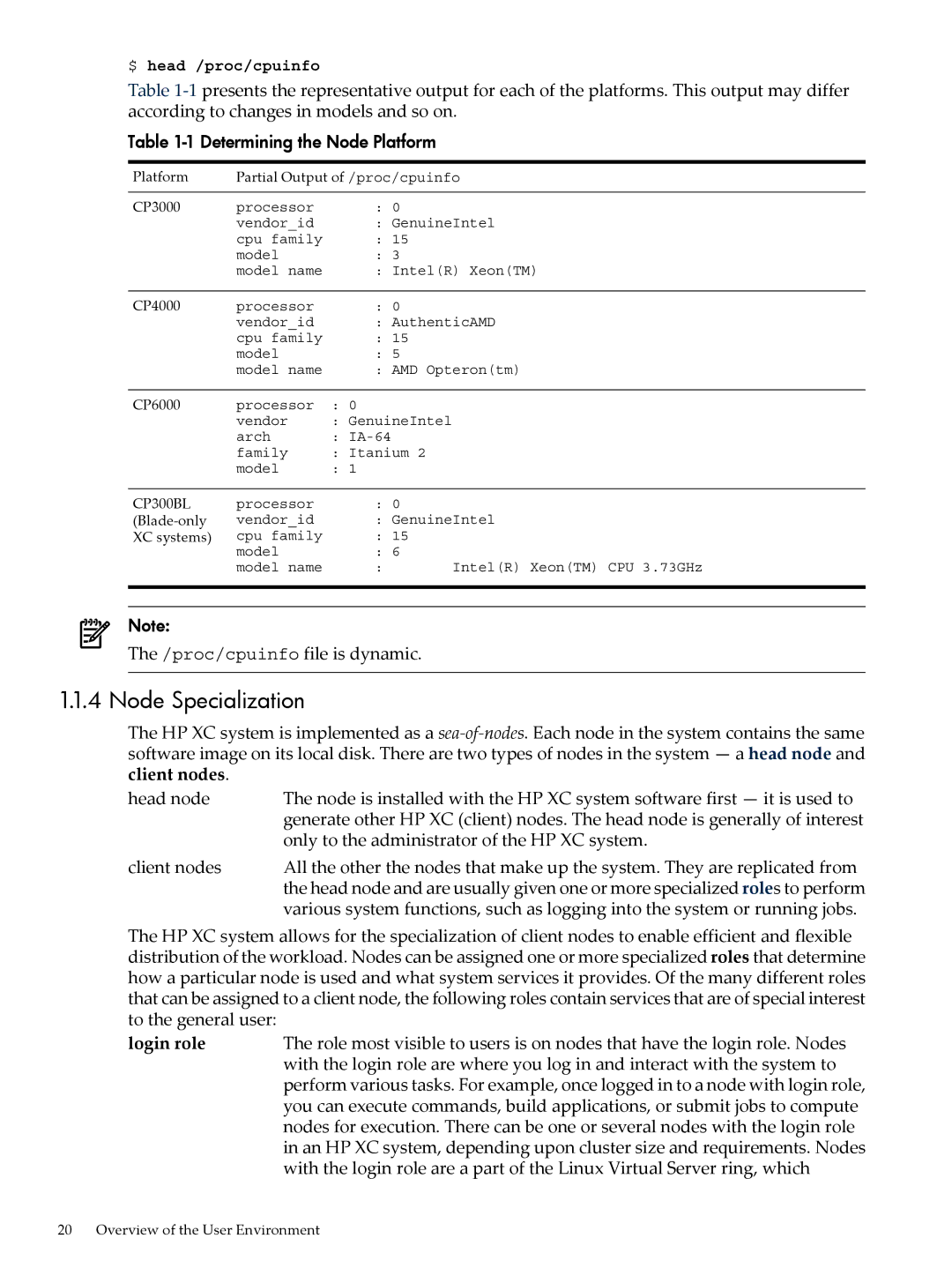
$ head /proc/cpuinfo
Table
Table 1-1 Determining the Node Platform
Platform | Partial Output of /proc/cpuinfo | ||
CP3000 | processor | : 0 |
|
| vendor_id | : GenuineIntel | |
| cpu family | : 15 |
|
| model | : 3 |
|
| model name | : Intel(R) Xeon(TM) | |
CP4000 | processor | : 0 |
|
| vendor_id | : AuthenticAMD | |
| cpu family | : 15 |
|
| model | : 5 |
|
| model name | : AMD Opteron(tm) | |
CP6000 | processor | : 0 |
|
| vendor | : GenuineIntel |
|
| arch | : |
|
| family | : Itanium 2 |
|
| model | : 1 |
|
CP300BL | processor | : 0 |
|
vendor_id | : GenuineIntel | ||
XC systems) | cpu family | : 15 |
|
| model | : 6 |
|
| model name | : | Intel(R) Xeon(TM) CPU 3.73GHz |
Note:
The /proc/cpuinfo file is dynamic.
1.1.4 Node Specialization
The HP XC system is implemented as a
head node | The node is installed with the HP XC system software first — it is used to |
| generate other HP XC (client) nodes. The head node is generally of interest |
| only to the administrator of the HP XC system. |
client nodes | All the other the nodes that make up the system. They are replicated from |
| the head node and are usually given one or more specialized roles to perform |
| various system functions, such as logging into the system or running jobs. |
The HP XC system allows for the specialization of client nodes to enable efficient and flexible distribution of the workload. Nodes can be assigned one or more specialized roles that determine how a particular node is used and what system services it provides. Of the many different roles that can be assigned to a client node, the following roles contain services that are of special interest to the general user:
login role | The role most visible to users is on nodes that have the login role. Nodes |
| with the login role are where you log in and interact with the system to |
| perform various tasks. For example, once logged in to a node with login role, |
| you can execute commands, build applications, or submit jobs to compute |
| nodes for execution. There can be one or several nodes with the login role |
| in an HP XC system, depending upon cluster size and requirements. Nodes |
| with the login role are a part of the Linux Virtual Server ring, which |
20 Overview of the User Environment
